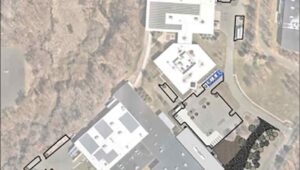Hydraulic shock caused huge ammonia leak
16th January 2015 USA: Hydraulic shock is said to have been the cause of an ammonia leak in 2010 at a chicken refrigeration plant that affected 153 workers and sent 32 to hospital.
USA: Hydraulic shock is said to have been the cause of an ammonia leak in 2010 at a chicken refrigeration plant that affected 153 workers and sent 32 to hospital.
The cause was revealed by the US Chemical Safety Board (CSB), yesterday, with publication of a safety bulletin for users of anhydrous ammonia in bulk refrigeration operations. The CSB is an independent US federal agency charged with investigating serious chemical accidents.
The safety lessons were derived from an investigation into the anhydrous ammonia release at Millard Refrigerated Services Inc, located in Theodore, Alabama, on August 23, 2010. Of the 153 reported ammonia exposures as a result of the leak, 32 workers were admitted to hospital and four were placed in intensive care. Over 14 tonnes of ammonia were reportedly released from the poultry plant which handled up to 2.5 million pounds of chicken each day.
The 143,000-pound ammonia refrigeration system supplied five product storage freezers and three blast freezers. The facility was designed to handle liquid ammonia at a minimum temperature of -40°C to a maximum temperature of 43°C, and the normal design system operating pressure ranged from 8.8in of mercury (Hg) vacuum to 210psig.
The incident
While two international ships were being loaded, low temperature liquid ammonia in the facility’s refrigeration system came into contact with hot ammonia gas in the evaporator coils. The resulting hydraulic shock caused a roof-mounted 12-inch suction pipe to catastrophically fail, resulting in the release of more than 32,000lbs of anhydrous ammonia.
The release led to one Millard employee sustaining injuries when he fell while attempting to escape from a crane after it became engulfed in the travelling ammonia cloud. The large cloud spread a quarter of a mile across the Theodore Industrial Canal toward an area where 800 contractors were working outdoors at a clean-up site for the Deepwater Horizon oil spill. A total of 152 offsite workers and ship crew members reported symptomatic illnesses from ammonia exposure. Thirty two of the offsite workers required hospitalisation, four of them in an intensive care unit.

The day before the event, the Millard facility experienced a loss of power that lasted over seven hours. During that time the refrigeration system was shut down. The next day the system regained power and was up and running, though operators are said to have reported some problems. While doing some troubleshooting an operator cleared alarms in the control system, which reset the refrigeration cycle on a group of freezer evaporators that were in the process of defrosting. The control system reset caused the freezer evaporator to switch directly from a step in the defrost cycle into refrigeration mode while the evaporator coil still contained hot, high-pressure gas.
According to Millard documentation, the control system contained a programming error that permitted the system to go from soft gas directly to refrigeration mode without bleeding the high pressure from the coil or preventing the low-temperature suction valve from opening.

The error with the software logic in the control system went undetected because under normal operations, in its programmed sequence, the defrost cycle would not allow the ammonia liquid to enter the evaporator until the coil was properly depressurised via the bleed cycle.
The reset triggered a valve to open and low temperature liquid ammonia was fed back into all four evaporator coils before removing the hot ammonia gas. This resulted in both hot, high-pressure gas and extremely low temperature liquid ammonia to be present in the coils and associated piping at the same time. This caused the hot high-pressure ammonia gas to rapidly condense into a liquid, creating a vacuum. The void sent a wave of liquid ammonia through the piping – causing the hydraulic shock.
The pressure surge ruptured the evaporator piping manifold inside one of the freezers and its associated 12-inch piping on the roof of the facility.
At approximately the same time, alarms sounded within the plant due to the detection of high concentrations of ammonia indoors by air-monitoring equipment in the freezers. The ammonia detected within the facility was the result of a second leak from a rupture of the system’s blast freezer evaporator header.
Three Millard employees went onto the roof in an attempt to close the manual valves that supplied ammonia to the 24,000ft2 blast freezer. The valves were reported closed about four hours after the initial release.
Ammonia released within the blast freezer due to the failed evaporator coil is said to have contaminated 3.6 million kg of poultry and packaging material. Ammonia concentrations as high as 7,275ppm were recorded in the contaminated blast freezer later that day.
Commenting on the findings, CSB chairperson Rafael Moure-Eraso said: “The CSB believes that if companies in the ammonia refrigeration industry follow the key lessons from its investigation into the accident at Millard Refrigeration Services, dangerous hydraulic shock events can be avoided – preventing injuries, environmental damage, and potential fatalities.”
Investigator Lucy Tyler said, “The CSB notes that one key lesson is to avoid the manual interruption of evaporators in defrost and ensure control systems are equipped with password protection to ensure only trained and authorised personnel have the authority to manually override systems.”
The CSB also found that the evaporators at the Millard facility were designed so that one set of valves controlled four separate evaporator coils. As a result, the contents of all four coils connected to that valve group were involved in the hydraulic shock event – leading to a larger, more hazardous pressure surge.
As a result, the CSB notes that when designing ammonia refrigeration systems each evaporator coil should be controlled by a separate set of valves.
The CSB found that immediately after discovering the ammonia release, a decision was made to isolate the source of the leak while the refrigeration system was still operating instead of initiating an emergency shutdown. Shutting down the refrigeration system may have resulted in a smaller release, since all other ammonia-containing equipment associated with the failed rooftop piping continued to operate.
A final key lesson from the CSB’s investigation is that an emergency shutdown should be activated in the event of an ammonia release if a leak cannot be promptly isolated and controlled. Doing so can greatly reduce the amount of ammonia released during an accident.
The full report can be found here.







